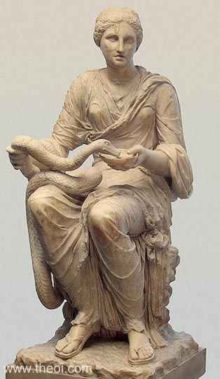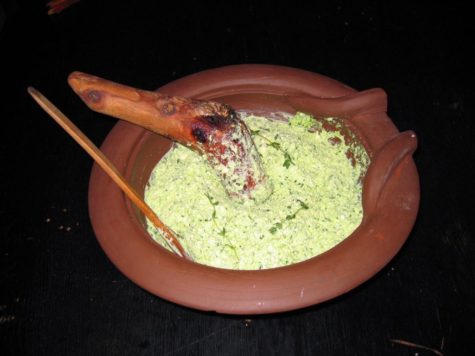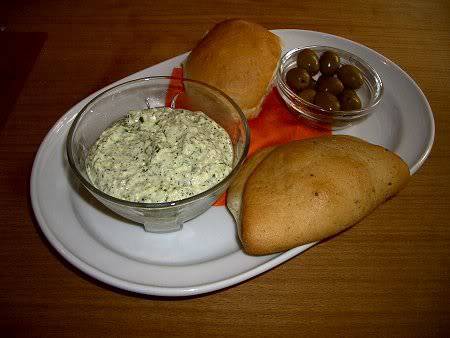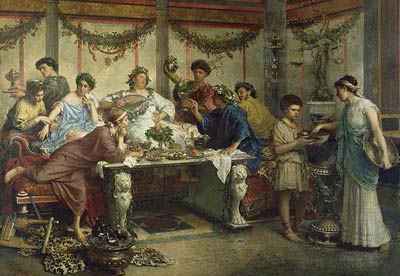Monthly Archives: March 2017
The first of April, some do say,
Is set apart for All Fools’ Day.
But why the people call it so,
Nor I, nor they themselves do know.
But on this day are people sent
On purpose for pure merriment.
— Poor Robin’s Almanac (1790)
The practice of playing tricks on April 1st dates back to 15th century France. Before that time, New Year’s Day was March 25, with a full week of partying and exchanging gifts until April 1. In 1582, the Gregorian calendar moved New Year’s Day to January 1. This was so unpopular that people began sending officials on “fool’s errands” in retaliation. The term “All Fools,” was probably meant as a deliberate stab at All Saints (November 1) and All Souls (November 2) Day.
Another source reports that when the dates changed, many peasants paid surprise visits to their neighbors on April 1 to trick them into thinking it was still the start of the New Year. Gradually the custom spread around the world, and people look forward to this day as an opportunity to play tricks on their friends and colleagues.
April Fools Superstitions:
- It is considered bad luck to attempt to trick someone after noon on April 1.
- Children born on April 1 are believed to be lucky, except when they gamble.
- If a man gets married on April 1, his wife will dominate him.
- It is considered bad luck to become annoyed when someone plays a practical joke on you on April Fools Day.
- If a young lady plays a practical joke on an eligible man on April Fool’s Day, it is a sign that they will marry.
Weather folklore states:
“If it thunders on All Fools Day,
It brings good crops of corn and hay.”
Around the world:
“All Fools’ Day” is practiced in many parts of the world with practical jokes, hoaxes, and sending people on a fool’s errand.
In Scotland, April Fools Day lasts 48 hours. Day two is know as Taily Day, and pranks involving the posterior are played. The victim’s practical joke is referred to as “hunting the gowk”; the gowk is an extinct cuckoo bird. When used here it mean foolish person.
Dinna laugh, dinna smile.
Hunt the gowk another mile.
In France, victims of the prank is the “poisson d’Avril” or “fish of April.” The fish in April are newly hatched and easily caught. French children enjoy taping a picture of a fish on their friends back and yelling out “Poisson dAvril!” when it is found.
In the United States, pranks are played on just about everybody. Pranks range from the standard “Your shoe is untied”, to some very creative and elaborate ideas. The only “rule” is that no one should be harmed. Corporations, newspapers, and television stations will also play practical jokes on the public on April Fools Day.
Magickal Applications:
Pranks and fun aside, this is a good day to consider the nature of the Fool and his associations with The Craft.
Fools have long been considered to be blessed by the Gods; indeed it used to be thought lucky to meet one on the way to work. The Fool is the first card in the Tarot where he represents the start of the magical journey and the step into the unknown. He is also still represented in decks of ordinary playing cards by the Joker or Jester.
The Fool is also linked with the Jester in his role of storyteller, or Bard, who traveled around taking news from place to place. Not only that but with connotations of riotous frivolity he is associated with fertility festivals and may appear as the Teaser in midsummer Rites.
His staff or wand with bells relates back to the sticks which were used to beat fertility into the population at the festivals of Pan. Hence he is linked with the trickster Gods Puck and Loki.
To gain a greater understanding of the Fool take this card from a Tarot deck and place one green and one red candle on either side. Light them and focus on the image before you. As you meditate on it, consider the journey of the Fool:
- Where is he going?
- Who will he meet?
From: The Real Witches’ Year, Encyclopedia of Superstitions, and various other sources.
Mothering Sunday has been celebrated on the fourth Sunday of Lent since the 16th century. In Bristol, Mothering Sunday was commemorated with Mothering Buns as well as cakes.
A Mothering Bun is a circular, slightly enriched, bread bun with white sugar icing strewn with hundreds-and-thousands. These small, fairly plain yeast rolls were also topped with the much-appreciated caraway or aniseed comfits (candies) that also flavored bath buns and seed cake.
From The Verse-Book of a Homely Woman:
Then down to Farmer Westacott’s, there’s doings fine and grand,
Because young Jake is coming home from sea, you understand.
Put into port but yesternight, and when he steps ashore,
‘Tis coming home the laddie is, to Somerset once more.
And so her’s baking spicy cakes, and stirring raisins in,
To welcome of her only chick, who’s coming Mothering.
Here’s a recipe:
A specialty of Bristol, these are made by local bakers the day before Mothering Sunday. Traditionally, on this day only, the Lent fast was relaxed. The buns used to be decorated with caraway or aniseed; today, hundreds and thousands are used.
Ingredients for the buns:
- 500g strong white bread flour
- 1 tsp salt
- 50g caster sugar
- 7g sachet instant yeast
- 50g unsalted butter, diced and softened
- 300ml water
Ingredients for the icing:
- 200g icing sugar
- 2–3 tbsp water
Instructions:
Put the flour in a large bowl. Add the salt and sugar on one side, the yeast on the other. Add the butter and three-quarters of the water, then turn the mixture round with the fingers of one hand. Add the remaining water a little at a time, mixing until you have taken in all the flour and the dough is soft and slightly sticky; you might not need all the water.
Oil the work surface to stop the dough sticking. Turn out the dough and knead for 5 mins, or until smooth and no longer sticky. Lightly oil the bowl, return the dough to it and cover with cling film. Leave to rise for at least an hour, until doubled in size. Line 2 baking trays
with baking parchment.
Scrape the dough out of the bowl onto a lightly floured surface and fold it inwards repeatedly until all the air has been knocked out and the dough is smooth. Divide into 12 pieces.
Roll each piece into a ball by placing it into a cage formed by your hand on the work surface and moving your hand in a circular motion, rotating the ball rapidly.
Put the balls of dough on the prepared baking trays, spacing them slightly apart. (They should just touch each other when they have risen.) Place each tray in a clean plastic bag and leave to prove for about 40 mins, until the rolls have doubled in size. Heat the oven to 220C/Fan 200/425F.
Bake for 10–12 mins, until the rolls are golden and sound hollow when tapped underneath. Transfer to a wire rack to cool.
For the icing, mix the icing sugar with enough water to give a thick but pour-able consistency. Dip each roll into the icing and then into the hundreds and thousands. Makes 12 buns.
Sources: Foods of England and Simple Things
Mothering Sunday is a holiday celebrated by Catholic and Protestant Christians in some parts of Europe. It falls on the fourth Sunday in Lent, exactly three weeks before Easter.
The other names attributed to the fourth Sunday in Lent include:
- Refreshment Sunday
- Pudding Pie Sunday (in Surrey, England)
- Mid-Lent Sunday
- Simnel Sunday
- Rose Sunday
Simnel Sunday is named after the practice of baking simnel cakes to celebrate the reuniting of families during the austerity of Lent. (Here is a recipe: Simnel Cake.) Because there is traditionally a relaxation of Lenten vows on this particular Sunday in celebration of the fellowship of family and church, the name Refreshment Sunday is sometimes used, although rarely today.
Simnel cake is a traditional confection associated with both Mothering Sunday and Easter. Around 1600, when the celebration was only held in England and Scotland, a different kind of pastry was preferred. In England, “Mothering Buns” or “Mothering Sunday Buns” were made to celebrate. These sweet buns are topped with pink or white icing and the multi-colored sprinkles known as “hundreds and thousands” in the UK. (Here’s a recipe: Mothering Buns). They are not widely made or served today in the UK but in Australia they are a bakery staple, not related to any particular celebration. In Northern England and Scotland some preferred “Carlings”, pancakes made of steeped peas fried in butter.
It is sometimes said that Mothering Sunday was once observed as a day on which people would visit their “mother” church. During the 16th century, people returned to their mother church, the main church or cathedral of the area, for a service to be held on Laetare Sunday. This was either the church where they were baptized, or the local parish church, or more often the nearest cathedral.
Anyone who did this was commonly said to have gone “a-mothering”, although whether this term preceded the observance of Mothering Sunday is unclear. In later times, Mothering Sunday became a day when domestic servants were given a day off to visit their mother church, usually with their own mothers and other family members. The children would pick wild flowers along the way to place in the church or give to their mothers. Eventually, the religious tradition evolved into the Mothering Sunday secular tradition of giving gifts to mothers.
It was often the only time that whole families could gather together, since on other days they were prevented by conflicting working hours, and servants were not given free days on other occasions.
Whatever its origins, it is now an occasion for honoring the mothers of children and giving them presents. It is increasingly being called Mothers’ Day, although that has always been a secular event quite different from the original Mothering Sunday. In the UK and Ireland, Mothering Sunday is celebrated in the same way as Mothers’ Day is celebrated elsewhere.
By the 1920’s the custom of keeping Mothering Sunday had tended to lapse in Ireland and in continental Europe. In 1914, inspired by Anna Jarvis’s efforts in the United States, Constance Penswick-Smith created the Mothering Sunday Movement, and in 1921 she wrote a book asking for the revival of the festival.
Its wide scale revival was through the influence of American and Canadian soldiers serving abroad during World War II; the traditions of Mothering Sunday, still practiced by the Church of England and Church of Ireland were merged with the newly imported traditions and celebrated in the wider Catholic and secular society. UK-based merchants saw the commercial opportunity in the holiday and relentlessly promoted it in the UK; by the 1950’s, it was celebrated across all the UK.
People from Ireland and the UK started celebrating Mothers’ Day on the same day that Mothering Sunday was celebrated, the fourth Sunday in Lent. The two celebrations have now been mixed up, and many people think that they are the same thing.
Mothering Sunday remains in the calendar of some Canadian Anglican churches, particularly those with strong English connections.
Found at: Wikipedia
 March 30 is the Festival of Salus, the Roman goddess of public safety, health and welfare.
March 30 is the Festival of Salus, the Roman goddess of public safety, health and welfare.
Salus was a minor goddess, the daughter of Aesculapius, the god of healing, whose staff, with a snake coiled round it, is symbolic of the practice of medicine. Their Greek equivalents were Aklepios and Hygeia. Her role in the pantheon was to feed and care for her father’s sacred snakes and act as his assistant. She was worshiped as being responsible for the welfare, not just of individuals, but of the people as a whole. Her name in Greek and Roman comes down to us in such words as ‘hygiene,’ ‘salve’ and ‘salubrious,’ and even ‘salute’ and ‘safe.’
In works of art, of which a considerable number has come down to our time, she was represented as a virgin dressed in a long robe, with the expression of mildness and kindness, and either alone or grouped with her father and sisters, and either sitting or standing, and leaning on her father. Her ordinary attribute is a serpent, which she is feeding from a cup.
To invoke the healing power of Salus (Hygeia) either of these two invocations can be used, or you can create an invocation of your own.
“O much desired, prolific, general queen. Hear me, life-bearing Hygeia, of beauteous mien, mother of all; by thee diseases dire, of bliss destructive, from our life retire; and every house is flourishing and fair, if with rejoicing aspect thou art there. Each daidal art thy vigorous force inspires, and all the world thy helping hand desires. Hades, life’s bane, alone resists thy will, and ever hates thy all-preserving skill. O fertile queen, from thee for ever flows to mortal life from agony repose; and men without thy all-sustaining ease find nothing useful, nothing formed to please. Without thy aid, not Hades’ self can thrive, nor man to much afflicted age arrive; for thou alone, of countenance serene, dost govern all things, universal queen. Assist thy mystics with propitious mind, and far avert disease of every kind.”
~ Orphic Hymn 68
“Hygeia, most revered of the blessed ones among mortals, may I dwell with you for what is left of my life, and may you graciously keep company with me: for any joy in wealth or in children or in a king’s godlike rule over men or in the desires which we hunt with the hidden nets of Aphrodite, any other delight or respite from toils that has been revealed by the gods to men, with you, blessed Hygeia, it flourishes and shines in the converse of the Kharites; and without you no man is happy.”
~from the Ariphron
Blins or blini were symbolically considered by early Slavic peoples in pre-Christian times as a symbol of the sun, due to their round form. They were traditionally prepared at the end of winter to honor the rebirth of the new sun. This tradition was adopted by the Orthodox church (Shrovetide, Butter Week, or Maslenitsa) and is carried on to the present day. Blini were also served at wakes to commemorate the recently deceased.
Traditional Russian blini are made with yeasted batter, which is left to rise and then diluted with cold or boiling water or milk. When diluted with boiling water, they are referred to as zavarniye blini. The blini are then baked in a traditional Russian oven. The process of cooking blini is still referred to as baking in Russian, even though these days they are almost universally pan-fried, like pancakes.
French crêpes made from unyeasted batter (usually made of flour, milk, and eggs) are also not uncommon in Russia, where they are called blinchiki and are considered to be an imported dish. All kinds of flour may be used for making blini: from wheat and buckwheat to oatmeal and millet, although wheat is currently the most popular.
What follows is a recipe for traditional Russian blini from RusCuisine. These pancakes are served with different dressings – most popular are sour cream, jam, syrup, red caviar, salmon, cottage cheese and others.
Ingredients:
- 3 1/2 c All-purpose flour
- 3 tb Water warm 105-F degrees
- 1 1/2 pk Yeast dry
- 3 3/4 c Milk warm 105-F degrees
- 1 tb Sugar
- 1/2 c Heavy cream
- 1 Egg white
- 2 Egg yolks
- 1 ts Salt
- 4 tb Butter unsalted melted and cooled until just warm
Take 1 tablespoon of the flour, the warm water, 1 teaspoon of the sugar, and the yeast and mix together in a small bowl. Cover and set in a warm place for 15 minutes. Mix in a large bowl the the 1 1/2 teaspoons of sugar, flour, milk, the yeast mixture and salt. Beat by hand for 4 minutes. Cover and set in a warm place for 1 hour.
Mix the egg yolks and remaining sugar and add to the natter along with the butter and beat with an electric mixer for 3 minutes or by hand for 8 minutes. Whip the egg white separately and whip the cream as well until very stiff. Fold in the cream then the egg white making sure to mix well. Cover again and place in a warm place for 45 minutes.
Grease the skillet with butter, place 2 tablespoons of batter in the center of the skillet, (at this point you may add any of the flavor garnishes that you wish or none at all) cook for 1 minute, turn the bliny over, and cook for 35 seconds, and serve smothered in sweet butter.
Dies Sanguinis (Day of Blood) was a festival held in Ancient Rome on 24 March. Also known as Bellona’s Day, this was an occasion when the Roman votaries of the war-goddess Bellona cut themselves and drank this sacrificial blood to propitiate the deity.
The worship of this asiatic goddess was introduced into Rome apparently by Sulla, to whom she had appeared, urging him to march to Rome and bathe in the blood of his enemies.
Note: She should not be mistaken for the Roman Bellona, whose festival, which was largely a huge feast, took place on the 3rd of June.
For her a new temple was built, and a college of priests (Bellonarii) instituted to conduct her fanatical rites, the prominent feature of which was to lacerate themselves and sprinkle the blood on the spectators. To make the scene more grim they wore black dresses (Tertullian, De Pallio) from head to foot.
The Priests of Bellona (also known as Bellonarii) practiced other rituals on Dies Sanguinis, one rite being to mutilate their own limbs, such as their own arms and legs with a sharp knife or knives in order to collect their own blood to either drink, or offer to their goddess Bellona in order to get her to invoke her war fury on them. In some instances, they would even drink their own blood in hopes that Bellona would grant a warlike frenzy.
An ancient source about Dies Sanguinis is in a book called “Apologeticum” by an early Roman Christian who states:
“on the sixteenth before the Kalends of April, that most sacred high priest of hers was offering, a week after, impure libations of blood drawn from his own arms…”
There also a plant known as the Bellonaria plant (solanum). Which is a corruption on the name Belladonna, a deadly nightshade, was used by priests at this festival, Dies Sanguinis.
When a priest ate its seeds, they would start to hallucinate. Those hallucinations were used by them to make prophetic and oracular statements in the name of their goddess.
Collected from various sources.
March 23 is the fifth day of the Quinquatria. A five day Roman festival to honor Minerva which coincides with the five day Ancient Greek festival to honor Athena – her Greek counterpart. Here is a ritual designed for group participation. It can, however, be modified for the solitary practitioner.
- Colors: Blue and brown
- Elements: Air and earth
- Altar: Upon a brown cloth light five blue candles, incense, and many tools of the crafter.
- Offerings: Make something.
- Daily Meal: Let those whose craft is cooking or baking make what they will as an offering.
Quinquatria Invocation III
Bones and clay of earth,
Flesh of trees and vines,
Thread from plant and animal,
Metal drawn from the ground
And forged in fire,
Our hands are midwives
To these unformed substances,
Given to us by the grace of the Mother,
As She gifts all her children.
We birth creations of beauty
That bring a smile to the eye,
We birth creations of usefulness
Made to be seized and worked day after day,
Fitting easily into the hand
That uses them unthinkingly.
Oh, ye many gods of the sacred touch,
Grant us the power to make manifest
With these our own humble hands.
(All approach the altar and select a tool, and speak their intentions towards it. Tools are then taken outside and laid on the Earth, and the Tool Blessing is said over them. Then, for the rest of the day, craftwork will be done, or things made or repaired.)
Tool Blessing (to be spoken or chanted or sung):
Father Labor, Mother Survival,
All brown gods of work and sweat;
Strong of arm, feet on Earth,
Bless this tool in Earth I set;
Sharp and keen, firm and fine,
Never break and never bend;
Be my strength, aid my skill,
Fill my hand and be my friend.
Found in: Pagan Book of Hours
Our recipe this week is straight out of the pages of Roman literature. Moretum is a delicious spread similar to our pesto—and the Roman poet Virgil was apparently a big fan!
The word “moretum” is Latin and is usually translated as “salad,” but that’s not really an accurate translation. It’s not a salad at all, at least not what we think of as salad in modern times. It’s a sort of spread or dip. Virgil is most often credited with the recipe. In his poem entitled “Moretum” he tells the story of Symilus, a peasant farmer, who is making his morning meal. He first makes the bread, but quickly realizes he has no meat to go along with the crusty creation. Concerned that man cannot survive on bread alone, he decides to make an accompaniment for his baked good. Virgil then describes the process by which Symilus makes his moretum. Both the bread and moretum-making are described in detail in the poem, but here is a little summary of the important moretum highlights, courtesy of Pass the Garum blog:
- Symilus gathers four heads of garlic (!), celery, parsley, rue, and coriander seeds.
- He grinds the garlic in his mortar and pestle, and adds salt and cheese.
- He then adds the celery, rue, parsley, and coriander seeds. The smell is so strong that it makes his eyes water!
- He adds some olive oil, finishes off the mixture, and slaps some on his freshly baked bread.
There are a couple of things about this recipe we will not be replicating in the recipe below. For one thing, there is an awful lot of garlic. We’re going to tone that down a bit, but feel free to pile it on if you’re a garlic fan. The Romans loved garlic. They believed it increased “strength and endurance” and so it was fed to “soldiers and sailors.”
It was also believed to “clean the arteries” and guard against toxins and infections. Today we know that garlic is often effective in treating and preventing many different ailments including, but not limited to, blood and heart conditions, some types of cancer, diabetes and even the common cold and flu.
More important than the potential overuse of garlic, rue is poisonous. However, rue is not altogether bad. In fact, it contains alkaloids that made it a useful treatment for indigestion during this time period (1st century BCE). But it also strongly influences the female menstrual cycle so pregnant women should definitely not consume it. We chose a recipe that leaves it out altogether.
Now that we’ve explored some history and cut out the dangerous ingredients, it’s time for a pesto party! Bake (or buy) a loaf of delicious bread to eat with your moretum and have some friends over for a night of Roman cuisine.
Roman Garlic Pesto (Moretum)
Ingredients
- 1 clove of garlic
- 1/2 of a celery stick (with its leaves)
- A small bunch of flat-leaf parsley
- 1 tablespoon of coriander seeds
- A pinch of salt
- Some aged pecorino cheese (approx. 8 ounces), feta is also a popular option
- 1 teaspoon of extra virgin olive oil
- A splash of vinegar
Instructions
Peel the garlic, add to the mortar and grind.
Add the salt, the cheese and the celery to the mortar and mash them up too. Really make sure to mix them well with the garlic from earlier.
To this paste, add the coriander seeds, parsley, oil and vinegar. I find that it is helpful to add the parsley in batches and break it down bit by bit rather than trying to do it all at once and making a mess. Test for flavor – if it is too garlicky, add more parsley.
Grab some bread and dip or spread ‘til your heart’s content!
From: Antiquity Now
In Ancient Roman religious tradition, The Hilaria (Greek: ἱλάρια; Latin: hilaris, “hilarious”) were festivals celebrated on the vernal equinox to honor Cybele, the mother of the Gods. The Romans took this feast originally from the Greeks, who called it ΑΝΑΒΑΣΙΣ, (Ascensus)
The day of its celebration was the first after the vernal equinox, or the first day of the year which was longer than the night (usually March 22) . The winter with its gloom had died, and the first day of a better season was spent in rejoicings.
The manner of its celebration during the time of the republic is unknown, except that Valerius Maximus mentions games in honor of the mother of the gods. Respecting its celebration at the time of the empire, we learn from Herodian that, among other things, there was a solemn procession, in which the statue of the goddess was carried, and before this statue were carried the most costly specimens of plate and works of art belonging either to wealthy Romans or to the emperors themselves.
All kinds of games and amusements were allowed on this day; masquerades were the most prominent among them, and everyone might, in his disguise, imitate whomsoever he liked, and even magistrates.
Here is a nice ritual to honor Cybele on her day from the Pagan Book of Hours:
- Color: Golden
- Element: Fire
- Altar: Upon a golden cloth set five gold candles, a chalice of wine, the figure of a lioness, and a crown resembling a turreted city.
- Offerings: Lions, herbs, wild game, music.
- Daily Meal: Game birds, such as turkey, goose, pheasant, or quail. Moretum – here’s recipe: Ancient Roman Garlic Pesto.

Invocation to Cybele
Magna Mater
Great Lady of the City
Protector of Civilization
Inspirer of music in the city streets
And in the high houses,
Queen upon your throne,
Guard the lands of stone and metal
Where the feet of thousands tread.
Magna Mater
Great Lady of the Wilderness
Protector of the Wild Things
Inspirer of music in lonely places
And in the deep metro’ons,
Lioness who hunts your prey,
Guard the beleaguered lands of untouched Nature
Where few feet tread
Save for the children of Earth whose steps belong there.
Magna Mater,
You who understand both worlds,
Do not let us forget
That both are valued in your eyes
That both hold promise and treasure
And that we must learn to live in both
If we are to survive.
(Beat drum and clash cymbals during chanting.)
Chant:
Magna Mater Cybele Cybele
Source: Wikipedia
In the Roman calendar, March was sacred to Mars. The “jumping priests,” or Salii began the Festival of the Salii on March 21 with a purification of the sacred trumpets that the Romans carried off to war. That date was originally the Roman New Year’s Day because it was the start of the growing and campaign season.
On March 21, the Salii marched to the Regia taking the bronze Ancilia, the sacred shield that had fallen down from heaven, and its 11 copies. They danced through the streets carrying poles with the shields mounted on them in their left hands. With their other hand, they banged the shields with a drumstick. Even in the time of Cicero, the Carmen Saliare they sang was so ancient that he could not understand it.
At the end of each night, they would stop at a place to be feasted before starting up again the next day. This festival would end on March 24 when they would return to the Regia and return the shields.
Found at Wikipedia

















